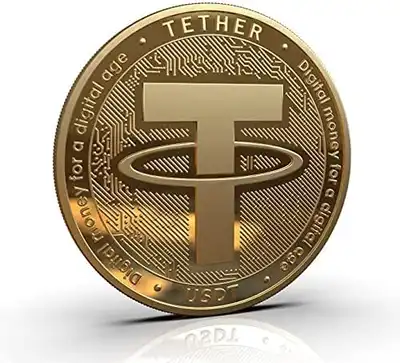Tether (USDT) has become a household name in the cryptocurrency world, known for its peg to the US Dollar. The concept of pegging a digital asset to a fiat currency has garnered immense interest and attention, as it aims to provide stability and mitigate the inherent volatility associated with cryptocurrencies like Bitcoin and Ethereum. In this expository article, we will explore the Tether peg to the US Dollar and delve into the mechanics of maintaining a 1:1 ratio, as well as the benefits and challenges of this pegging mechanism.
1. Understanding the Tether Peg:
The Tether peg to the US Dollar signifies that each Tether token (USDT) in circulation is backed by an equivalent amount of US Dollars held in reserve. For every USDT issued by Tether Limited, the company behind Tether, there should be one US Dollar held in reserve to maintain the 1:1 ratio. This pegging mechanism is the foundation of Tether’s promise to provide a stable and redeemable digital asset that represents a claim to real-world value.
2. Purpose and Benefits:
The primary purpose of pegging Tether to the US Dollar is to offer a stable and reliable digital asset that can act as a hedge against the price volatility experienced by most cryptocurrencies. By maintaining a 1:1 ratio with the US Dollar, Tether strives to remain unaffected by the wild price swings that are often associated with cryptocurrencies, making it an attractive option for traders, investors, and businesses seeking a stable store of value and a medium of exchange.
Tether’s peg to the US Dollar provides several benefits, including:
a. Price Stability: Tether’s 1:1 peg ensures that the value of each USDT remains relatively constant and close to one US Dollar. This stability makes it an excellent instrument for executing transactions and managing financial operations without being exposed to significant price fluctuations.

b. Seamless Trading Pairs: Tether’s peg to the US Dollar has made it a common base pair on many cryptocurrency exchanges. This means that many cryptocurrencies can be easily traded against Tether, facilitating liquidity and simplifying the trading process.
c. Cross-Border Transactions: Tether’s peg to the US Dollar enables swift and low-cost cross-border transactions. Users can send and receive Tether globally, avoiding the complexities of traditional banking systems and currency conversions.
3. Maintaining the Peg:
Maintaining the 1:1 peg between Tether and the US Dollar requires a diligent approach. Tether Limited claims to hold the equivalent amount of US Dollars in reserve for each issued USDT. However, the company has faced criticism for its lack of transparency and failure to provide regular, independent audits that would verify the full backing of USDT tokens.
The mechanics of maintaining the peg involve ensuring that the total supply of USDT in circulation matches the amount of US Dollars held in reserve. If Tether issues more USDT than there are US Dollars in reserve, the peg may be at risk. Conversely, if users redeem large amounts of USDT for US Dollars, it may also impact the stability of the peg.
4. Controversies and Regulatory Scrutiny:
The Tether peg has been a subject of controversy and regulatory scrutiny. Skeptics have raised concerns about Tether’s ability to fully back its USDT tokens and the possibility of operating with a fractional reserve. The lack of regular and independent audits has fueled suspicions and criticism.
In 2019, the New York Attorney General’s office filed a lawsuit against Tether Limited and Bitfinex (a crypto exchange affiliated with Tether) alleging mismanagement of funds and concealing losses, further intensifying regulatory concerns.




